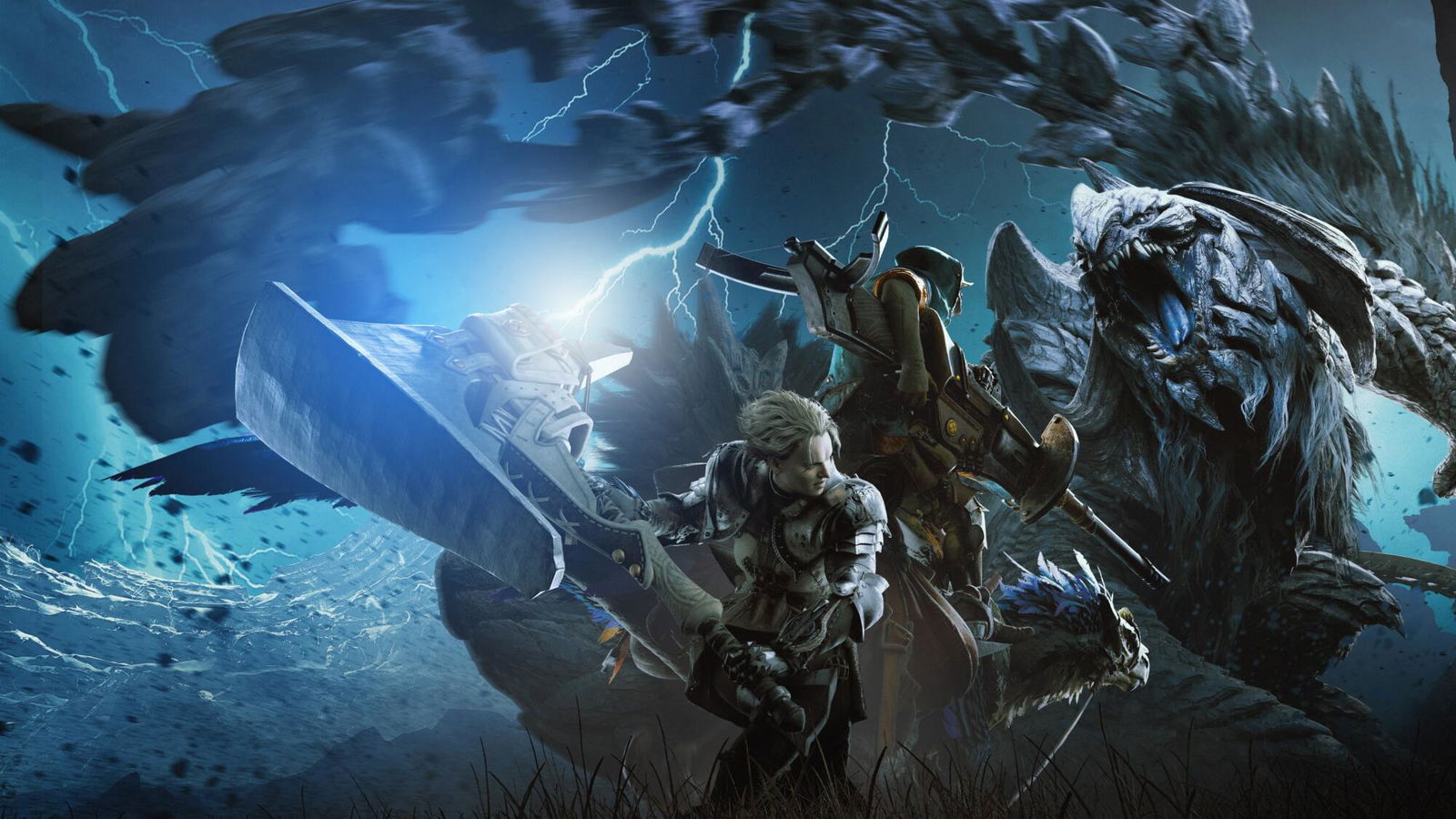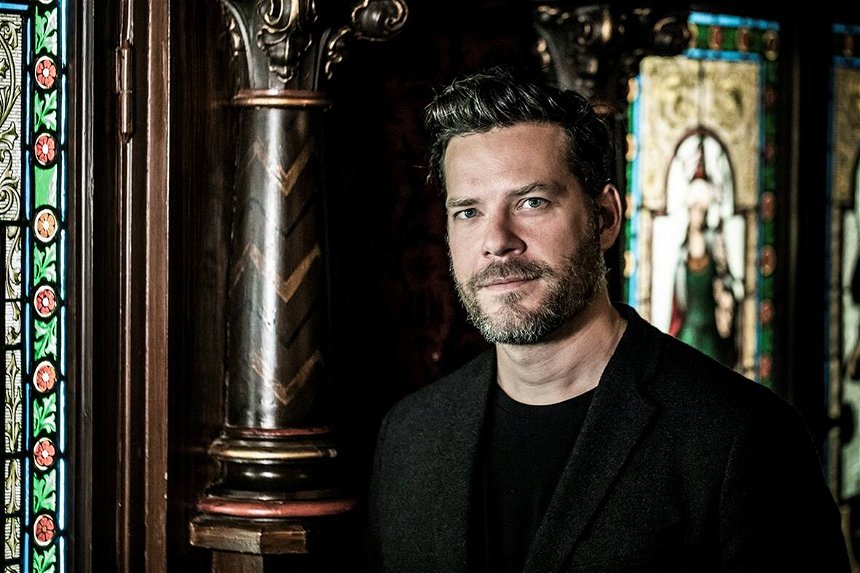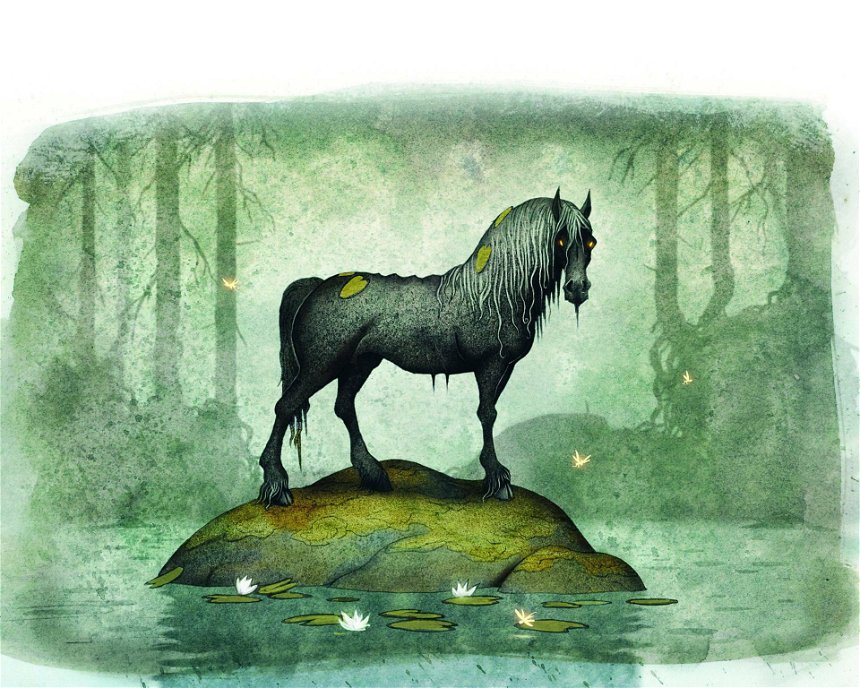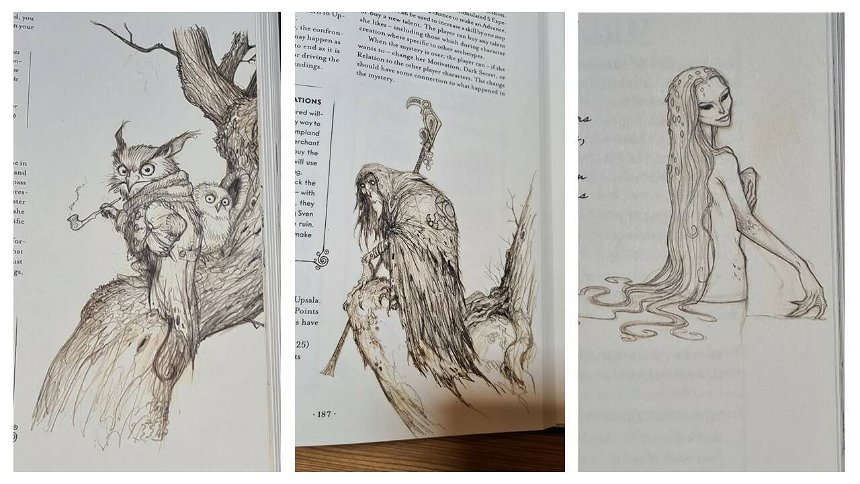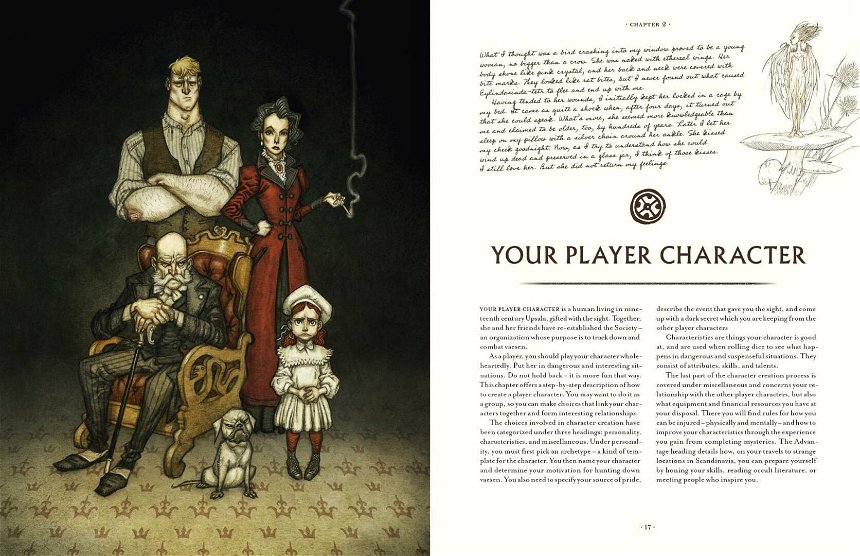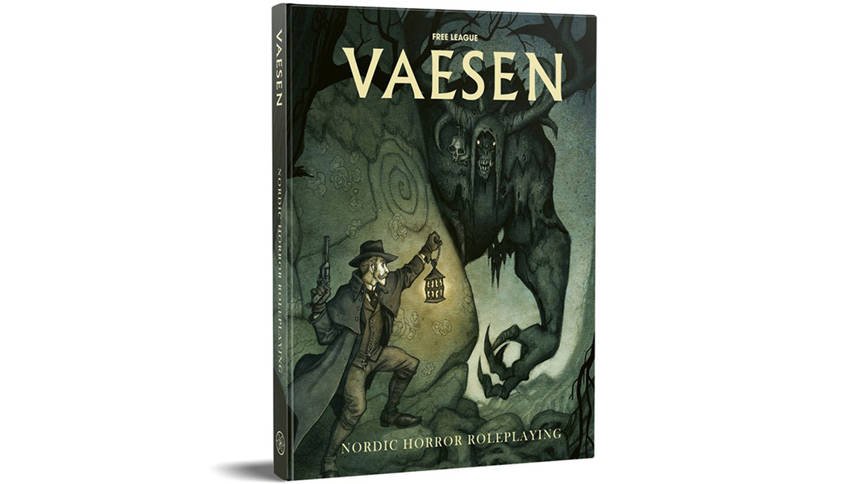Continuano le nostre interviste legate al gioco di ruolo Vaesen – Nordic Horror Roleplaying (di cui potete leggere la nostra recensione), pubblicato dalla casa editrice svedese Free League Publishing. Dopo aver intervistato Nils Hintze (leggi qui l'intervista), autore del gioco, oggi è il turno di Johan Egerkrans, il creatore, artista e autore del libro acclamato dalla critica Vaesen: Spirits and Monsters of Scandinavian Folklore, su cui è basato il mondo di gioco, e che ha contribuito a rendere il manuale di gioco davvero meraviglioso con le sue splendide illustrazioni.
Riportiamo, in fondo all’intervista, la stessa in lingua inglese.
L'intervista a Johan Egerkrans
Ciao Johan, grazie per il tempo che ci dedichi. Sappiamo che sei un artista prolifico che ha realizzato, tra le altre cose, l’acclamato libro illustrato "Vaesen: Spirits and Monsters of Scandinavian Folklore" di cui sei autore e illustratore e che è di fatto l’opera su cui si basa l’ambientazione del gioco di ruolo Vaesen – Nordic Horror Roleplaying di Free League Publishing, il cui manuale gode delle tue opere d’arte. Raccontaci qualcosa in più di te: quando ti sei avvicinato al mondo dell’illustrazione? Da quanto tempo lavori come illustratore e quando hai capito che sarebbe stato il lavoro della tua vita? Parlaci un po’ dei tuoi progetti passati, di cosa ti sei occupato prima di dare alle stampe Vaesen: Spirits and Monsters of Scandinavian Folklore e il conseguente gioco di ruolo?Ciao Davide, è un piacere! Ho disegnato durante tutta la mia vita, probabilmente fina da prima di quando io riesca a ricordare. I primi disegni che i miei genitori hanno conservato risalgono all'età di due o tre anni e da allora non ho mai smesso di scarabocchiare e disegnare in nessun momento della mia vita. La mia prima opera a pagamento è stata una striscia a fumetti che ho realizzato per il giornale locale del luogo in cui sono cresciuto, quando avevo 16 anni. Alcuni anni dopo, ho incontrato Johan Sjöberg e Stefan Ljungqvist, che avevano appena avviato una società di giochi chiamata Cell e ho illustrato il loro primo gioco di ruolo, Gemini. Quello è stato il mio primo gioco di ruolo. Dopo di che, una cosa tira l'altra, e sono diventato un concept artist, lavorando principalmente con i giochi per computer, e dopo ancora qualche anno mi sono ritrovato a lavorare sempre di più con i libri per bambini. Da allora questo è stato il mio obiettivo principale.
Puoi dirci qualcosa sulla genesi di Vaesen: Spirits and Monsters of Scandinavian Folklore? Cosa ti ha spinto a dedicare un libro al folklore nordico? Quanto miti, leggende e folklore fanno parte della tua vita?
Ho nutrito un fascino profondamente radicato per il mito e il fantasy da quando... Beh, da sempre, immagino. Quando avevo dieci anni, ho scoperto Tolkien e i giochi di ruolo fantasy praticamente contemporaneamente, il che fu a dir poco una rivelazione. Quegli anni formativi di gioco di ruolo hanno definito la mia carriera: tutto ciò che faccio è fondamentalmente rivolto al me stesso di dieci anni. Da bambino mi piaceva molto anche la mitologia - quel fascino risale a quando ero ancora più piccolo. i miti norreni ovviamente, ma anche la mitologia classica greca e romana, quella egiziana, quella celtica - tutte. Ma i miti norreni e il folklore scandinavo sono sempre stati i più vicini al mio cuore. Il concetto del libro Vaesen è molto ispirato al libro “Faeries” di Alan Lee e Brian Frouds della fine degli anni Settanta, sul mondo fatato del folklore britannico. L'ho avuto da bambino e ho sempre voluto fare qualcosa di simile. Quando il mio editore ha voluto che scrivessi qualcosa di mio, sono ritornato su quell'idea, ispirandomi anche ai manuali dei mostri dei giochi di ruolo, ed è nato Vaesen.
Dando un’occhiata alle tue opere presenti sui tuoi canali Internet si può notare come il tuo stile artistico, pur rimanendo fedele a se stesso, vari a seconda del soggetto. Per quanto riguarda i soggetti folkloristici e più puramente fantasy, trovo che il tuo stile sia decisamente fiabesco e sognante, cosa che davvero amo, e mi riporta alla mente le opere di un altro maestro dell’illustrazione svedese: John Bauer. Quali sono gli artisti e le opere che più ti hanno influenzato?
Bauer è ovviamente uno dei principali ispiratori. Mi sono innamorato delle sue opere da bambino: avevamo una vasta collezione delle sue fiabe illustrate a casa e potevo sedermi e sfogliare quel libro per ore. Anche i suoi contemporanei, come Arthur Rackham, Edmund Dulac, Kay Nielsen e Gustaf Tenggren sono stati estremamente influenti. Poi ci sono tutti gli artisti dei fumetti con cui sono cresciuto: Mike Mignola, Simon Bisley e molti altri. Ho sempre avuto un talento per imitare altri stili, cosa che mi è stata molto utile quando lavoravo come concept artist: un mese realizzi un gioco di supereroi in stile altamente stilizzato a la Bruce Timm, un altro mese è un horror ispirato da Clive Barker, un fantasy a la Frazetta o qualcosa di completamente diverso.
Lo faccio ancora, in una certa misura: mi piace incorporare piccoli omaggi ai miei illustratori preferiti nelle mie illustrazioni.
I soggetti legati a Vaesen, persino quelli più tipicamente mostruosi, raramente sono illustrati in modo davvero spaventoso, spesso anzi fanno mostra di una sorta di vena malinconica, quasi a rappresentare un mondo magico che sta via via scomparendo. Questo è anche uno dei temi dell’ambientazione del gioco di ruolo. Quali sono le ragioni dietro questa scelta stilistica?
Ebbene, i vaesen sono spiriti della natura, strettamente legati al mondo naturale e a volte del tutto inseparabili dalla natura stessa. Loro SONO le montagne, i laghi e le foreste. Considerando il modo in cui noi esseri umani trattiamo la natura, forse non è molto sorprendente che ci sia una vena di malinconia lì dentro... Il gioco è ambientato durante la rivoluzione industriale, che è quando abbiamo iniziato a rovinare il pianeta su scala industriale.
Nella prefazione di Vaesen – Nordic Horror Roleplaying abbiamo appreso che sei stato, e presumiamo tu sia ancora, un giocatore di ruolo. Raccontaci del tuo rapporto con il gioco di ruolo, ha in qualche modo influenzato il tuo essere un illustratore?
Certamente sì. Dal momento in cui ho scoperto i giochi di ruolo all'età di dieci anni o giù di lì, ho sempre voluto diventare un illustratore di giochi di ruolo. Cosa che ho finito per fare, per come sono andate le cose.
Il libro Vasen è anche in parte ispirato ai manuali dei mostri dei miei giorni di gioco di ruolo: volevo fare qualcosa di simile, basandomi solo sul folclore reale (troll "reali" invece di troll fantasy) e senza statistiche.
Puoi raccontarci come avviene il processo di creazione di una tua illustrazione? Con quale mezzo ti piace lavorare?
Lavoro in una sorta di stile che miscela più mezzi, eseguo schizzi preliminari o disegni al tratto su carta e renderizzo il dipinto finale in Photoshop. Non disegno quasi mai direttamente sul computer: non è possibile battere la tattilità della matita su carta. Secondo me qualcosa si perde quando lavori solo in digitale. Il computer è comunque un ottimo strumento.
Puoi raccontarci qual è stato e come è stato il passaggio da Vaesen: Spirits and Monsters of Scandinavian Folklore a Vaesen RPG?
Dal momento in cui Vaesen (il libro) è uscito, io e Fria Ligan/Free League abbiamo iniziato a parlare dell'adattamento del libro in un gioco di ruolo. Come ho detto, il libro è stato in parte ispirato dai manuali dei giochi di ruolo, quindi in pratica avevamo già un manuale dei mostri: dovevamo solo trovare un'ambientazione adatta. Un mondo per la campagna. Abbiamo presto deciso per la Scandinavia del XIX secolo: volevamo un certo elemento fiabesco, una qualità onirica, quindi non volevamo ambientarlo in epoca moderna.
Le tue magnifiche illustrazioni all’interno di Vaesen – Nordic Horror Roleplaying fanno da perfetto contrappunto al testo del gioco e riescono a calare completamente il giocatore nell’ambientazione. Quanto è stata profonda la tua collaborazione a questo progetto?
Sono stato abbastanza sul pezzo. Il gioco è stato ovviamente scritto in modo magistrale da Nils Hintze, ma lo sviluppo iniziale, il concetto di base, è stato realizzato da me e dai ragazzi di Free League. Ho commentato e ho contribuito allo sviluppo del gioco dall'inizio alla fine. Essendo io stesso un vecchio giocatore di ruolo, avevo alcune idee su come il gioco avrebbe dovuto funzionare e, naturalmente, avevo un'idea di come i vaesen stessi avrebbero dovuto essere interpretati. Era molto importante che rimanessero misteriosi e inquietanti: non avrebbero mai dovuto essere trasformati nei tipici mostri di palude standard dei giochi di ruolo. Non volevamo avventure del tipo: "Sei attaccato da 2D6 gnomi con spade corte". Dovrebbe essere molto diverso da un dungeon crawler.
Negli ultimi anni i giochi di ruolo di origine svedese, quelli di Free League Publishing in primis, hanno affiancato a un alto standard qualitativo dal punto di vista ludico anche un importante livello qualitativo del comparto artistico. Quanto è importante, a tuo avviso, l’aspetto artistico in un gioco di ruolo? Un gioco di ruolo può essere una valida vetrina per un artista per farsi conoscere al di fuori dei propri confini?
Penso che sia davvero possibile. Un gioco di ruolo può essere bello quanto un libro. E mi piacciono molto i libri, il loro aspetto fisico. Possono essere bellissimi artefatti. Non solo le illustrazioni, ma la tipografia, la rilegatura e così via: tutti questi aspetti contribuiscono all’insieme. Questo è ciò che io e il mio editore abbiamo deciso di fare con il libro originale di Vaesen: creare un libro molto tattile che trasudasse qualità e volevamo che il gioco di ruolo fosse altrettanto attraente.
Cosa puoi dirci dei tuoi progetti futuri? Vedremo presto altre tue opere d’arte tra le pagine di qualche manuale di gioco di ruolo?
Ci saranno sicuramente molti supplementi per Vaesen e continueremo ad espanderne l’ambientazione. Quei fastidiosi non morti potrebbero benissimo fare un'apparizione...
A parte questo, vedremo cosa ci riserva il futuro. Questo autunno vedrà l'uscita di una nuova edizione del classico del 1954 di Astrid Lindgren "Mio, My Son" (un romanzo svedese per bambini, NdR) con le mie illustrazioni, così come un mio quarto (!) libro sui dinosauri, sul triceratopo e altri ceratopsiani. I prossimi progetti includono un grande volume sui draghi del mito e della favola, che dovrebbe uscire in svedese, inglese e tedesco nel prossimo anno.
Purtroppo, non esistono edizioni italiane dei tuoi lavori, credi che in futuro sarà possibile vederne la localizzazione in italiano? Nel frattempo, purtroppo è quasi impossibile trovare in Italia persino le edizioni in inglese dei libri da te realizzati, puoi suggerire ai nostri lettori dove è possibile acquistarli?
Difficile da dire. Dipende davvero dagli editori italiani. Per il momento Vaesen, Norse Gods e The Undead sono disponibili almeno in inglese su www.grimfrost.com e penso che le librerie svedesi spediscano in tutta l'UE. Provate www.bokus.com. E se parlate tedesco, tutti i miei libri sono disponibili in quella lingua su Amazon.
Cosa vuoi dire ai giocatori italiani per convincerli a provare Vaesen?
Se vuoi un gioco di ruolo che sia in parte Penny Dreadful, in parte Il Richiamo di Cthulhu (di cui potete leggere la nostra recensione) e in parte fiaba di John Bauer, ragazzo, ho un gioco per te!
Grazie ancora Johan per il tuo tempo e la tua cordialità
Grazie per avermi ospitato!
The interview with Johan Egerkrans in English
Hi Johan, thank you for your time. We know that you are a prolific artist who created as author and illustrator, among other things, the acclaimed illustrated book "Vaesen: Spirits and Monsters of Scandinavian Folklore". This is the book on which the setting of the tabletop RPG Vaesen - Nordic Horror Roleplaying by Free League Publishing is based and whose manual enjoys your artworks. Tell us a little more about yourself: when did you approach the world of illustration? How long have you been working as an illustrator an when did you realize this was going to be your life's work?
Tell us a little about your past projects, what did you do before publishing Vaesen: Spirits and Monsters of Scandinavian Folklore and the consequent role-playing game?
I’ve been drawing all my life - probably since before I can remember. The first drawings my parents have saved are from the age of two or three, and I’ve never stopped doodling and sketching at any point in my life. My first paid gig was a comic strip I did for the local newspaper where I grew up when I was 16. A few years later I met Johan Sjöberg and Stefan Ljungqvist who had just started up a games company called Cell, and I illustrated their first RPG Gemini. So that was my first roleplaying game. After that one thing led to another and I became a concept artist working mainly with computer games, and after yet another few years I found myself working more and more with children’s books. That’s been my main focus ever since.
Can you tell us something about the genesis of Vaesen: Spirits and Monsters of Scandinavian Folklore? What prompted you to dedicate a book to Nordic folklore? How much myths, legends and folklore are part of your life?
I´ve nursed a deeply rooted fascination for myth and fantasy since... Well, forever, I guess. When I was ten, I discovered Tolkien and fantasy roleplaying games basically at the same time, which was a revelation to say the least. Those formative RPG years have defined my career - everything I do is basically aimed at myself at ten years old. I was also really into mythology as a kid - that fascination goes back even further. the Norse myths of course, but also classic Greek and Roman mythology, Egyptian, Celtic - all of them. But the Norse myths and Scandinavian folklore was always closest to my heart. The concept of the book Vaesen is very much inspired by Alan Lee and Brian Frouds late seventies book “Faeries”, about fey from British folklore. I had that as a kid and always wanted to do something similar. When my editor wanted me to write something of my own, I fell back on that idea, also taking inspiration from RPG monster manuals, and Vaesen was born.
Taking a look at your works on your Internet channels, it’s possible to see how your artistic style, while remaining true to itself, varies depending on the subject. As for the folkloric and more purely fantasy subjects, I find your style to be decidedly fairytale and dreamy - which I really love - and it reminds me the works of another Swedish illustration master: John Bauer.What are the artists and works that most influenced you?
Bauer is obviously one of main inspirators. I fell in love with his works as child - we had a huge collection of his illustrated fairy tales at home, and I could sit and flip through that book for hours. His contemporaries like Arthur Rackham; Edmund Dulac, Kay Nielsen and Gustaf Tenggren are also hugely influential. Then it’s all the comic book artists I grew up with - Mike Mignola, Simon Bisley and many more. I’ve always had a knack for imitating others styles, which came in very handy when I worked as concept artist - one month you did a superhero game in a highly stylised Bruce Timm style, another month it was horror inspired by Clive Barker, Frazettaesque fantasy or something completely different.
I still do that to an extent - I like incorporating little homages to my favourite illustrators in my pictures.
The subjects linked to Vaesen, even the most typically monstrous ones, are rarely illustrated in a truly frightening way, often in fact they display a sort of melancholy vein, as if to represent a magical world that is gradually disappearing. This is also one of the themes of the RPG setting. What are the reasons behind this stylistic choice?
Well, the vaesen are nature spirits, closely linked to the natural world and at times quite inseparable from nature itself. They ARE the mountains, the lakes and the forests. Considering how we humans treat nature it’s perhaps not very surprising there will be a streak of melancholy in there… The game is set during the industrial revolution, which is when we really started messing up the planet on an industrial scale.
In the preface of Vaesen - Nordic Horror Roleplaying we learned that you have been, and we assume you still are, a roleplay gamer. Tell us about your relationship with RPGs, has it in any way influenced your being an illustrator?
It certainly has. From the moment I discovered RPGs at the age of ten or so I wanted to be a roleplaying game illustrator. Which I ended up doing as things turned out.
The book Vasen is also partly inspired by the monster manuals from my roleplaying days - I wanted to do something similar, only based on actual folklore (“real” trolls instead of fantasy trolls) and without stats.
Can you tell us how the process of creating your illustration takes place? What medium do you like to work with?
I work in a sort of mixed media style, where I do preliminary sketches or lineart on paper, and render the final painting in Photoshop. I almost never draw straight into the computer - you can’t beat the tactility of pencil on paper. In my opinion something gets lost when you only work digitally. The computer is a great tool though.
Can you tell us which was the transition from Vaesen: Spirits and Monsters of Scandinavian Folklore to Vaesen RPG and how it was?
From the moment Vaesen (the book) came out, me and Fria Ligan/Free League started talking about adapting the book into a roleplaying game. Like I said the book was partly inspired by RPG sourcebooks so we already had a monster manual - we just had to come up with a suitable setting. A campaign world. We soon settled on 19th century Scandinavia - we wanted a certain fairy tale element, a dream like quality, so we didn’t want to set it in modern times.
Your magnificent illustrations within Vaesen - Nordic Horror Roleplaying are a perfect counterpoint to the text of the game and manage to completely immerse the player in the setting. How deep was your collaboration on this project?
I was pretty hands on. The game is of course expertly written by Nils Hintze, but the early development, the basic concept, was made by me and the guys at Free League. I commented and had a hand in the development of the game from start to finish. As an old roleplayer myself I had some ideas about how the game should work and of course I had a vision about how the vaesen themselves should be portrayed. It was very important they remain mysterious and eerie - they should never be turned into bog standard RPG monsters. We didn’t want adventures of the type “You’re attacked by 2D6 gnomes with short swords”. It should be very different from a dungeon crawler.
In recent years, role-playing games of Swedish origin, primarily those of Free League Publishing, have combined a high quality standard from a playful point of view with an high quality level in the artistic sector. How important, in your opinion, is the artistic aspect of a role-playing game? Can a role-playing game be a valid showcase for an artist to make himself known outside his own borders?
I think it really can. RPG can be just as beautiful as book. And I really like books - the physical aspect of them. They can be beautiful artefacts. Not just the illustrations but the typography, the binding and so on - all those aspects contribute to the whole. That’s what me and my publisher set out to do with the original Vaesen book - create a very tactile book that oozed quality, and we wanted the RPG to be just as attractive.
What can you tell us about your future projects? Will we soon see other works of art of yours among the pages of some RPG book?
There will certainly be more Vaesen sourcebooks, and we’ll continue to expand the setting. Those pesky Undead may very well make an appearance…
Apart from that, we’ll see what the future holds. This fall sees the release of a new edition of Astrid Lindgren’s 1954 classic “Mio, My Son” with my illustrations, as well a my fourth (!) dinosaur book about Triceratops and other ceratopsians. Upcoming projects include a big volume on dragons of myth and fable that should be out in Swedish, English and German some time next year.
Unfortunately, there are no Italian editions of your works, do you think that in the future it will be possible to see the localization in Italian? In the meantime, unfortunately it is almost impossible to find in Italy even the English editions of the books you have made, can you suggest to our readers where they can buy them?
Hard to say. That’s really up to the italian publishers. For the time being Vaesen, Norse Gods and The Undead are at least available in English from www.grimfrost.com and I think Swedish bookstores ship to all over the EU. Try www.bokus.com. If you speak German, all my books are available in that language from Amazon.
What do you want to say to the Italian players to convince them to try Vaesen RPG?
If you want a roleplaying game that is part Penny Dreadful, part Call of Cthulhu and part John Bauer fairy tale, boy do I have a game for you!
Thanks again Johan for your time and your kindness
Thanks for having me!

